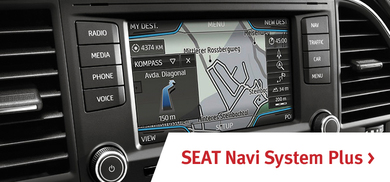Seat Media System Update
Posted : admin On 25.12.2020Once on the Software Update screen, you will then select UPDATE SOFTWARE that is at the bottom right-hand corner of the screen. IF this is grayed-out then you do not need to update the system since the software on the USB Drive is the same as or older version than what’s already on your Lexus Multimedia system. Step 5 – Turn on the MMI system. It's not necessary to start your car. Keep your foot off the brake pedal, and with the doors closed press 'Start.' Locate the 'Menu' button on the center console. Make the following selections in the following order: 'Setup MMI,' and 'System Update.' Next, select 'Source,' which will be your SD location. Updates are available from Gracenote on a quarterly basis. Get Gracenote Updates. Software System Updates. Conveniently update Display Audio and Rear-Seat Entertainment systems with the latest system software over-the-air wirelessly or via USB. Select a Honda Vehicle to view vehicle information. Labview serial number. What I did then was purchase a new SD card from Ebay for around £50, you have to make sure the SD card is new. Search for SEAT MK3 5F sat nav SD card. If the card is new the system will write its stamp to it and it will work. I did this for the 2016 update, I then downloaded the 2017 update and overwrote my original card and that actually worked.
If your drive is not FAT32 you can reformat your drive to FAT32. Here are some instructions for formatting a USB drive.For Windows operating systems:
Jabber 12.5 download mac. Each year, a new navigation system map update is released to provide access to the latest information. A lot can change in 12 months, and in the last three years over 1.2 million miles of new roads have been added to the navigation system map. That’s in addition to 1.5 million miles of updated roads and thousands of new points of interest.
Note: These steps may vary by operating system version
Verify Drive Format
- Connect the USB Flash Drive to the Windows computer.
- In the “Computer” window, right-click on the drive icon in which the USB device appears.
- From the menu, click “Properties”.
- Under “Properties”, the File System should display FAT32.
- If the File System is not FAT32, follow the instructions below to format your USB storage device to FAT32.
Note: The reformat process will delete all content on this USB drive. Please backup content before reformatting
- Connect the USB Flash Drive to the Windows computer.
- Click “Start” and then click “Computer” or “This PC”.
- In the “Computer” window, right-click on the drive icon in which the USB device appears.
- From the menu, click “Format”.
- Under “File system” choose FAT32.
- Once the process is complete, your drive will be formatted as FAT32.
Note: These steps may vary by operating system version.
Verify Drive Format
Seat Media System Update Software
- Connect the USB Flash Drive to the Mac OS X computer.
- Hold the Ctrl button and click on the USB drive, or Right click on the USB drive.
- Select “Get Info”.
- Select the system profile.
- Verify the “Format” is MS-DOS (FAT32).
- If the format is not “MS-DOS (FAT32)”, follow the instructions below to format your USB storage device to FAT32.
 Note: The reformat process will delete all content on this USB drive. Please backup content before reformatting
Note: The reformat process will delete all content on this USB drive. Please backup content before reformattingSeat Media System Update Bios
- Connect the USB Flash Drive to the Mac OS X computer.
- Search for Disk Utility in Launchpad and open it.
- Select the USB drive and click “Erase”.
- For Name: Enter a name for the USB drive.
- For Format: Select MS-DOS(FAT). Note: MS-DOS(FAT) is FAT32.
- Click on Erase.
- Once the process is complete your drive will be formatted as FAT32.